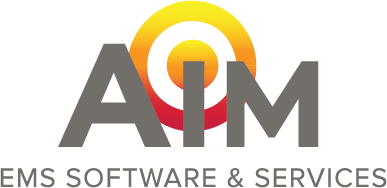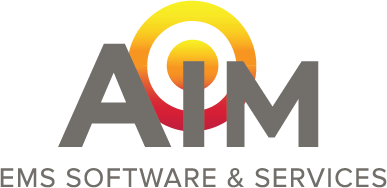
The ability for an EMS agency to move from one documentation method to a new EMS ePCR program can be a long and challenging process.
Selecting the right ePCR Software should involve agency management and a small focus group of select stakeholders.
Following a clearly defined implementation plan will help minimize delays to the “Go Live” date as well as reduce problems once the “Go Live” date has passed and the EMS ePCR software is fully implemented.
Once the agency selects an EMS ePCR vendor, the steps of implementation can begin by reviewing documentation already created during the selection process. The agency should review the minimum needed hardware and software specifications and start the procurement process to upgrade or obtain the needed hardware. With all the different hardware and operating system (OS) platforms available today, the agency should estimate the depreciation of the hardware and replacement cycle to purchase hardware that will best fit the operations and budget of the service. Buying the cheapest possible hardware can be problematic because it might not last until the planned replacement date, yet the most expensive hardware can cause budgetary constraints or overages. The agency’s goal should be to find hardware that will fit within the budget and last until the planned replacement date.
During the procurement of the hardware, the agency should start working with the EMS ePCR vendor on the implementation process, starting with a running project list of all the steps needed to implement agency business processes in addition to any steps provided by the EMS ePCR vendor. The EMS agency needs to be careful when looking at current business processes from the start of an EMS call to the closing of a patient account to make sure that all processes are accounted for and merged into the policies and procedures of the new software. Once the hardware is obtained and properly configured, the agency and EMS ePCR software vendor can proceed with the software installation process, installing locally if the EMS agency is housing ePCR software internally on servers, or initial configuration if the EMS ePCR software is web based.
Once the initial installation or configuration is complete, the agency should start the process of making sure the software is compliant with the procedures and needs outlined by the EMS agency during the planning phase. This would include rules to capture required data elements above and beyond state requirements, implementing business logic rules to ensure that the data obtained is accurate, and removing any fields deemed to be not necessary if possible. During this phase it is important to take every data element and rule into account because all ePCR reports will be based off this data. Patient Care Report data can become skewed and show errant data if a crew member enters a time incorrectly or an incorrect vital sign. When thinking of rules, also think of corner cases which might easily get overlooked, such as entering a pulse of 0 when the patient is conscious or a blood pressure of 120/80 when the patient is deceased. National Emergency Medical Services Information Services (NEMSIS) data manuals can be difficult to navigate, but provide detailed explanations of each data element being collected.
During the initial configuration, a training program should be created and implemented, if not already provided as a service of the EMS ePCR vendor, to train all crew members not only on the new EMS ePCR software, but also the hardware that is being used to run the software. Care needs to be taken to identify potential “at risk” crew members who might need extra training and hands on practice due to a lack of technological skills in either basic computing or reading comprehension. This training period should include some degree of classroom type instruction in addition to the crews being allowed to use the EMS ePCR software freely, as they would during a shift, to get used to the workflow of the software. Find out if the EMS ePCR software allows for charts to be entered in the system but not count towards the actual data collection of the service by setting a “Go Live” date where everything prior to that date is either erased or ignored.
An easily overlooked aspect of implementing an EMS ePCR program is the creation of new policies and documents to go along with the program. If the EMS ePCR program is web based, the agency needs to consider where PCR’s are going to be completed and how Protected Health Information (PHI) is being secured. The creation of these policies and documents are not directly related to the EMS ePCR vendor or software, but are an essential part of the implementation process to ensure compliance with all federal, state, and local privacy laws.
Once all staff members are trained on the operation of the software and understand the policies and procedures that the agency created, the system can go live. Additional steps to investigate during the implementation are the interaction between third parties and applications. How will the data obtained in the EMS ePCR software get to the billing company? How will the PCR be submitted to the receiving facility? How will agency management use the data and perform QA functions? If a previous ePCR system was used, how will the service maintain access to all the data within that system? These are steps that can be considered either during the implementation or once the system has been placed into service and daily use.
The implementation of an EMS ePCR program can be a long and daunting challenge depending on several different factors of the EMS agency, but as with selecting an EMS ePCR Program, taking the proper approach can alleviate many of the problems or unwanted surprises that can occur. Having a systematic approach to the planning, implementation, testing, and training will help all staff members become comfortable with the ePCR software regardless of their prior computer experience. In the end, each crew member should not focus on the abilities of others in using the software, but their ability to use the software after the training compared to before the training started.
This post was written by Jesse Haas, Independent Writer, EMT-Paramedic, Operations Supervisor, and Information Technology Supervisor.




